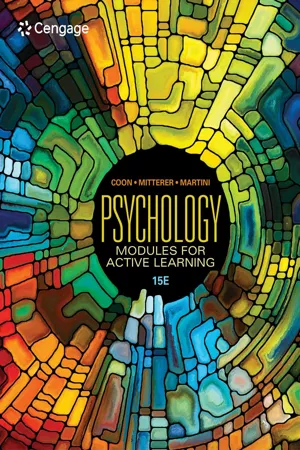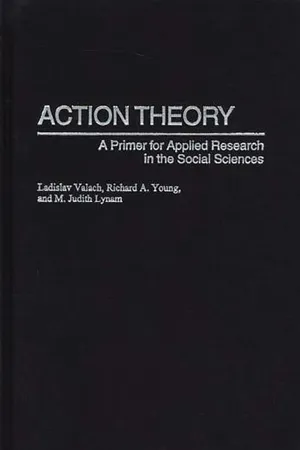Psychology
Observational Design
Observational design refers to a research method in which the researcher observes and records behavior without directly interfering. This approach allows for the study of natural behavior in real-world settings. Observational design is commonly used in psychology to gather data on human behavior, providing valuable insights into social interactions, developmental processes, and other aspects of human psychology.
Written by Perlego with AI-assistance
Related key terms
1 of 5
6 Key excerpts on "Observational Design"
- eBook - PDF
- Alan E. Kazdin(Author)
- 2021(Publication Date)
- Cambridge University Press(Publisher)
For example, these designs rule in epide- miology and public health where intact groups (popula- tions at risk, with disease) are routinely studied. The designs and methods of data analyses are specialties of their own. There is barely enough time to teach some experimental designs and some statistics in psychology, yet draw on the methodological advances of other disciplines areas. Yet the key components of methodology (research design, data evaluation) span many areas of science, and the increase interdisciplinary collaborative nature of research has help diffuse methodologies across boundaries. It is important to dispel quickly a traditional psy- chology view, perhaps not as readily voiced today, that observational research has secondary status and takes a back seat to true experiments. Sciences in general are more in the public view, and we see regularly that many if not most scientific fields (e.g., astronomy, archeology, meteorology, volcanology [volcanos], seismology [earth- quakes], and of course my favorite, pomology [study of fruits]) rely heavily on observations of different condi- tions rather than experimental manipulation of the sub- ject matter. Now we can predict catastrophic weather conditions fairly well and also identify planets from other galaxies (called exoplanets) that might be habitable and provide new places to start up fast-food franchises. Few scientists or citizens complain that both the weather pre- dictions and exoplanets emerge from observational data alone. In psychology, and perhaps especially clinical, coun- seling, school, and educational psychology, observational research plays a special role for several reasons. They are: 1. Core questions of interest do not permit experimental manipulation. For example, even as debate continues about how to diagnose mental disorders, we study them. Indeed, our studies will shed light on domains that will eventually improve diagnosis. - eBook - PDF
Psychology
Modules for Active Learning
- Dennis Coon, John Mitterer, Tanya Martini, , Dennis Coon, John Mitterer, Tanya Martini, (Authors)
- 2021(Publication Date)
- Cengage Learning EMEA(Publisher)
44 MODULE 5 Introducing Psychology Descriptive Research Methods Because it is not always possible to conduct experiments, psychologists gather evidence and test hypotheses in many other ways (Jackson, 2016). For example, psychologists who want to study behavior as it unfolds in natural settings use naturalistic observation . As an example of this technique, New Caledonian crows wearing tiny “crow cams” have been recorded using twigs to forage for food. Psychologists who are looking for interesting relationships between events often rely on correlational research . It also can be difficult or impossible to study rare events or unique individuals with the experimental method. When more detail about, say, mental disorders such as depression or psychosis, is required, a case study may be preferred. Likewise, the survey method allows questions about the behavior of large groups of people to be answered by conducting polls. Let’s see how each of these descriptive methods is used to advance psychological knowledge. Learning Outcome 5.1 Explain the purpose of carrying out natural observations in psychological research, and two limitations of doing so Psychologists sometimes rely on naturalistic observation , a research method based on careful recording of behavior in normal settings. This often means observing behavior in a natural setting (the typical environment in which a person or animal lives). For example, in 1960, Jane Goodall first observed a wild chimpanzee in Tanzania use a grass stem as a tool to remove termites from a termite mound (Van Lawick-Goodall, 1971). Notice that naturalistic observation provides only descriptions of behavior. To explain observations, we may need information from other research methods. Just the same, Goodall’s discovery showed that humans are not the only tool-making animals. - eBook - PDF
Behavior and Sequential Analyses
Principles and Practice
- Thomas L Sharpe, John Koperwas(Authors)
- 2003(Publication Date)
- SAGE Publications, Inc(Publisher)
Our design type discussion includes designs that are common to reporting observational behavior-event data that have used traditional discrete measures of behavior 234 RECORDING TACTICS, DESIGN TYPES, AND DATA ANALYSES and designs that use sequential measures to report behavior-event occurrences. The design types discussed in this section include a range of designs—from what may be considered pre-experimental designs because of their minimal accounting or control for the variety of inter-nal validity issues contained in Table 8.1 to rigorous experimental designs that attempt to account for all of the internal validity issues just described. A Pre-experimental Case At its most simplistic level, it is not unreasonable to think of the methods described in this book in terms of nonexperimental activities. For example, a wide variety of professionals who practice in applied educational and clinical settings, and have limited ability to formally manipulate their settings in experimental ways, may still benefit from direct observation approaches to the description and analysis of behav-ior and event practices of interest. As a function of daily educational and clinical practice, many professionals are naturally undertaking some form of systematic observation of their situations in ongoing efforts to improve the effectiveness of those situations. In these situa-tions, no formal experimental intervention is possible or even required. The aim of observation is primarily descriptive, using conventional thinking over behavior and event occurrences to manipulate future practice toward increased effectiveness. In these types of cases, the pri-mary interest is on baseline data, or the “A” phase of an experimental design, which involves a complete description of what is actually occurring in a particular situation in the absence of an intended treat-ment. - Paul M. Kellstedt, Guy D. Whitten(Authors)
- 2018(Publication Date)
- Cambridge University Press(Publisher)
They are known as observational studies because, unlike the controlled and somewhat artificial nature of most experiments, in these research designs, researchers simply take reality as it is and “observe” it, attempting to sort out causal connections without the benefit of randomly assigning participants to treatment groups. Instead, different values of the independent variable already exist in the world, and what scientists do is observe them and then evaluate their theoretical claims by putting them through the same four causal hurdles to discover whether X causes Y. This leads to the definition of an observational study: An observa- tional study is a research design in which the researcher does not have control over values of the independent variable, which occur naturally. However, it is necessary that there be some degree of variability in the independent variable across cases, as well as variation in the dependent variable. Because there is no random assignment to treatment groups, as in experiments, some scholars claim that it is impossible to speak of causality in observational studies, and therefore sometimes refer to them as corre- lational studies. Along with most political scientists, we do not share this view. Certainly experiments produce higher degrees of confidence about causal matters than do observational studies. However, in observational studies, if sufficient attention is paid to accounting for all of the other possible causes of the dependent variable that are suggested by current understanding, then we can make informed evaluations of our confidence that the independent variable does cause the dependent variable. Observational studies, as this discussion implies, face exactly the same four causal hurdles as do experiments.- eBook - PDF
Research Methods in Radiology
A Practical Guide
- Andrea S. Doria, George Tomlinson, Joseph Beyene, Rahim Moineddin, Andrea S. Doria, George Tomlinson, Joseph Beyene, Rahim Moineddin, Andrea S. Doria, George Tomlinson, Joseph Beyene(Authors)
- 2018(Publication Date)
- Thieme(Publisher)
87 5 Observational Designs Marinka Twilt, Ivan R. Diamond, and Susanne M. Benseler of which patients received the treatments or procedures being compared, nor does the in-vestigator have control over how they were administered. Although nonexperimental designs have low internal validity and are generally not considered the optimal approach to com-pare therapies or procedures, they are fre-quently used. One of the reasons for this is that in some circumstances observational studies are the only practical strategy. This may occur when an RCT is impractical, for example, when the condition under investi-gation is rare. Observational approaches may also occur, earlier in the experience with a new treatment, where the ethical imperative of equipoise (evidence for similar effective -ness of both treatments to be compared) is not yet met for an RCT to be undertaken. Re-sults from Observational Designs may in fact form the justification for RCTs. In addition, observational studies are less expensive than experimental studies and are therefore the most commonly utilized research design in health care. Observational studies may also be more reflective of “real life” as they often have less restrictive inclusion criteria than experimental designs and often include the entire spectrum of patients with a particular illness, rather that selecting patients with specific characteristics which limits the gen -eralizability of the results. 1 Retrospective versus Prospective Studies The distinction between retrospective versus prospective studies is often assumed to be in-herent to a particular research design. While this is partly true, in that some types of stud-ies can only be prospective, for example, a clinical trial, many study designs can be done in both a retrospective or prospective manner, for example, a cohort study. ■ Learning Objectives l To understand what is meant by observa-tional design. - eBook - PDF
Action Theory
A Primer for Applied Research in the Social Sciences
- Ladislav Valach, Richard A. Young, M. Judith Lynam(Authors)
- 2002(Publication Date)
- Praeger(Publisher)
It is another empirical approach in addition to naive observation and subjective reports. Although considered too time consuming by many, systematic observation is the method by which Renaissance thoughts and constructions were initiated and developed. How- ever, modern psychological observation research left the path of broad de- scriptive observation, often called botanizing, and became a very specialized, detailed, and elaborate method. Coding of nonverbal aspects of facial expres- sion (Ekman & Friesen, 1975) as well as analyzing linguistic notations of conversation openings (conversation analysis) (Schegloff & Sacks, 1973) were topics frequently investigated under the rubric of specialized psychological research. In these approaches many physically defined observational units are used in which such aspects as the extent, direction, or position are re- corded in terms of time or unit of length (for example, in centimeters or de- grees). At that time the notation of meaningful behavioral or action units was found in ecological psychology, in the tradition of Barker and Wright (1951, 1955), and in ethnography (Vidich & Lyman, 1994). Coding of functional steps is mostly used in ethology (Hinde, 1982) and group research (Bales & Cohen, 1979). The corresponding categories for an observational system and quality criteria are indicated in Figure 1.7. Target processes such as facial expression or conversations, which have been addressed by the researchers identified, can be integrated to the action system, as illustrated in Figure 1.8. In dealing with meaningful actions in environmental settings, socially de- fined categories are used. These categories represent consensual labels even naive observers agree upon. In observation of the lowest-order behavioral elements, structurally defined units using physical measures are employed. In coding sequences of steps directed either toward goals or adaptational tar- gets, functional categories are used.
Index pages curate the most relevant extracts from our library of academic textbooks. They’ve been created using an in-house natural language model (NLM), each adding context and meaning to key research topics.





